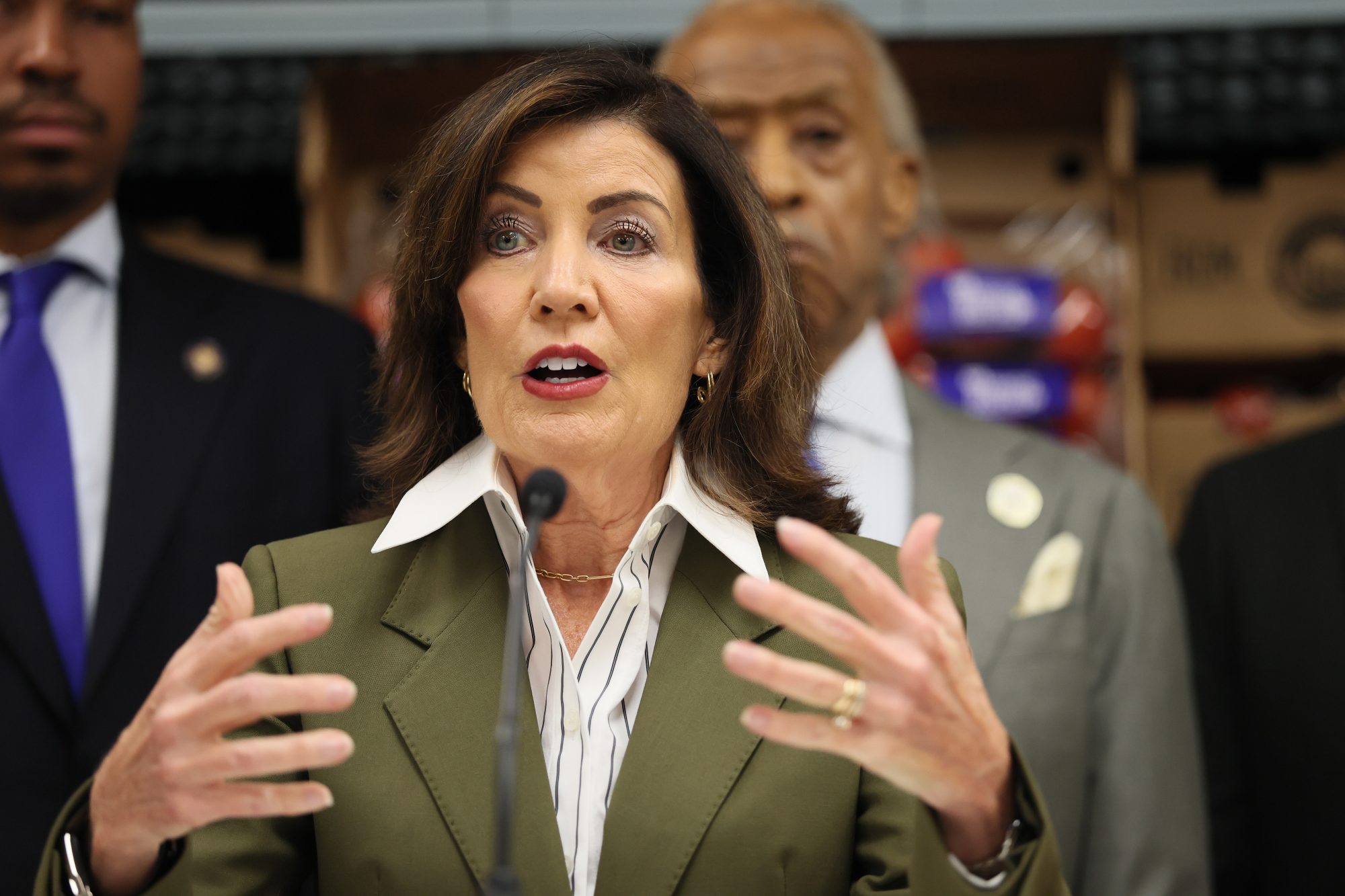Some Democrats in Albany may be starting to see the risks of New York’s “climate action” laws, but will enough agree to even delay what some call a “suicide pact”? Governor Kathy Hochul says she wants to “review all our options,” including making changes to the state’s 2019 Climate Leadership and Community Protection Act (CLCPA). This law set ambitious mandates to slash greenhouse-gas emissions—mandates critics say are budget-busting and unrealistic.
Some Assembly Democrats who once denied that Hochul was banning gas stoves now admit that’s exactly what she’s doing, and they are demanding a delay to the ban. However, convincing the progressive majority in the Legislature to roll back the law will be tough. Climate change remains a top priority on the left, especially among donors and college-educated voters.
Watch New Jersey closely, where voter anger over soaring electric costs could propel Republican Jack Ciattarelli to the governor’s mansion. Even a close race there may open eyes in Albany. Rising utility bills and the threat of blackouts are already becoming major issues in New York, and Hochul plans to make “affordability” a centerpiece of her 2026 reelection campaign.
“My job is to ensure we have enough power to keep the lights on, keep rates affordable, and attract major economic development projects,” Hochul said after a judge ordered her Department of Environmental Conservation to issue rules ensuring the state meets the 2019 law’s emissions goals.
In other words, she wants to override—or at least ignore—the clear letter of the law, even if she doesn’t explicitly call its mandates into question. “We plan to review all our options, including working with the Legislature to modify the CLCPA,” Hochul said, emphasizing the need “to protect New Yorkers from higher costs.”
Under the CLCPA, New York must cut CO2 emissions by 40% by 2030 and by 85% by 2050. The law also required that rules to achieve those goals be enacted by January 1, 2024. Yet here we are, nearly two years later, and those rules have still not materialized. In effect, Hochul is ignoring the law.
Meanwhile, Assemblyman William Conrad (D-West New York) reports that the state’s no-gas mandate—set to take effect at the end of the year—has already increased construction costs. This threatens affordable housing projects and raises concerns about potential winter blackouts.
Even more troubling, the state’s Climate Action Plan mandates closing natural-gas power plants and replacing them with more expensive, less reliable solar and offshore wind installations—many of which are struggling to get off the ground.
The New York Independent System Operator (NYISO), which runs the state’s electric grid, alongside the New York Affordable Clean Power Alliance, a solar-industry group, warn that the shift to solar and wind poses serious threats to reliable power, particularly in the Hudson Valley, Long Island, and New York City.
How will Governor Hochul prevent blackouts and keep costs down as the power supply tightens? Especially as NYISO notes growing electricity demands from cryptocurrency mining, data centers, and all the “green” mandates requiring electricity for heating, cooking, and vehicles?
The idea that New York can build enough solar and wind power infrastructure in time to meet these mandates was always a long shot—a charade aimed at pleasing climate activists. Yet it is the state’s legal obligation.
As legal deadlines approach or pass without the state fulfilling them, the truth becomes clearer: Making “net-zero carbon emissions” a top priority is not only unrealistic, it is also expensive, risky, and, some argue, misguided.
How many court orders can the governor defy? Can she convince the Legislature to amend the laws and ease the pressure from the courts?
Politicians like Hochul may only focus on timing. The 2026 gas mandates kick in just as reelection campaigns begin. “Don’t bring things to a grinding halt,” suggests Assemblyman John McDonald (D-Rensselaer). Instead, “slow down a little bit and put a temporary pause in there.”
Translation: Wait until after reelection before hitting New Yorkers with higher bills and blackouts. Remember how Hochul delayed congestion pricing until after the 2024 elections?
But reality won’t change after the election. Albany should scrap these mandates entirely and focus on economic growth. Yet Hochul seems likely to push only for delays, and progressives might not even agree to that much. Forget about the bold moves New York truly needs, like opening the state to fracking.
As long as Democrats dominate, it’s hard to see New York having reliable electric power anytime soon—let alone power that is affordable.
https://nypost.com/2025/11/01/opinion/albany-may-move-to-delay-its-insane-climate-laws-but-far-better-to-scrap-it-altogether/
